The last thing I expected to hear when I interviewed Eric Hahn to learn more about his beekeeping hobby is that he’s highly allergic to bees. He doesn’t eat much honey either. So why would this CWEnder decide to add beehives to his urban backyard?
Eric’s fascination with bees began when he was a student at Ladue High School and saw an “observation hive” outside the kitchen window while at a party. He remembers being less interested in the party than the sight of that hive, which he never forgot. Eight years ago, when he decided to raise his own bees, he did so despite a lack of enthusiasm from his wife Julie or their 3 kids. He also didn’t anticipate that a bee sting would send him to the emergency room, though I doubt that would have changed much.
Eric and Julie, who have lived in the CWE for 30 years, met when they were both teaching special ed. Julie is now an Assistant Superintendent in the Ritenour School District, and Eric is a history teacher at Clayton High School. He previously taught at Ladue High School and John Burroughs. Each summer, Eric works for the College Board helping teachers prepare students for the college entrance exams. Teachers from across the U. S., and from countries such as China, Sweden, and Colombia, South America participate in the online classes.
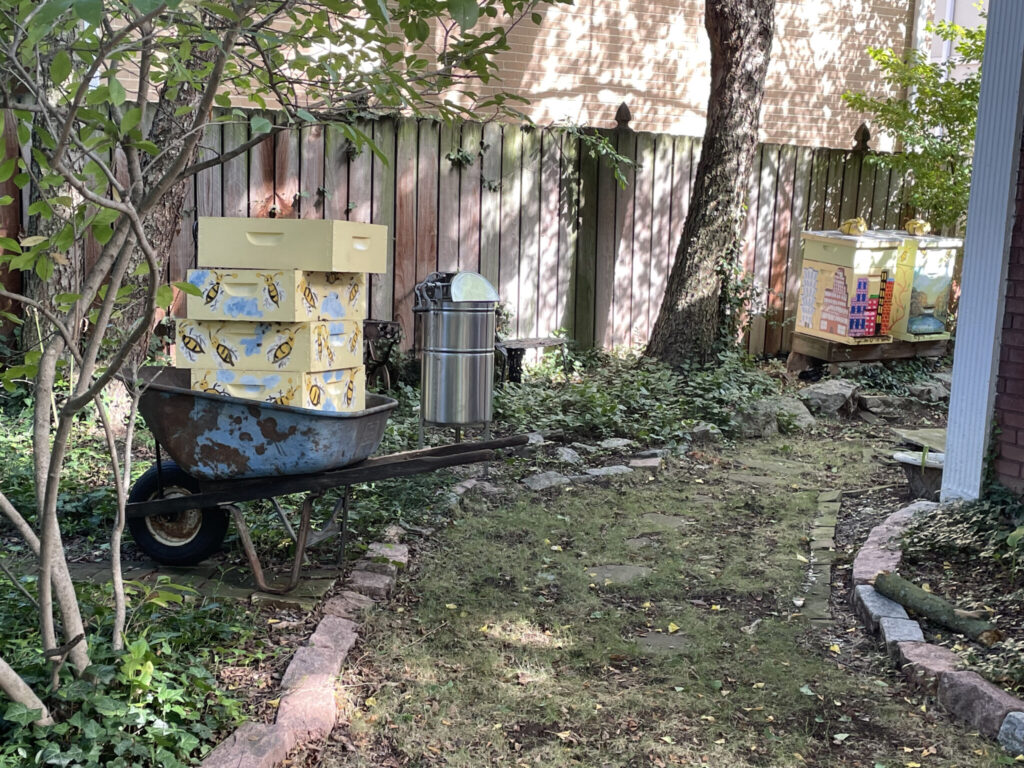
Two of Eric’s hives are tucked in the back corner of the yard near the alley. There wasn’t room for a third hive, so Eric persuaded some friends in Clayton to let him place it in their yard.
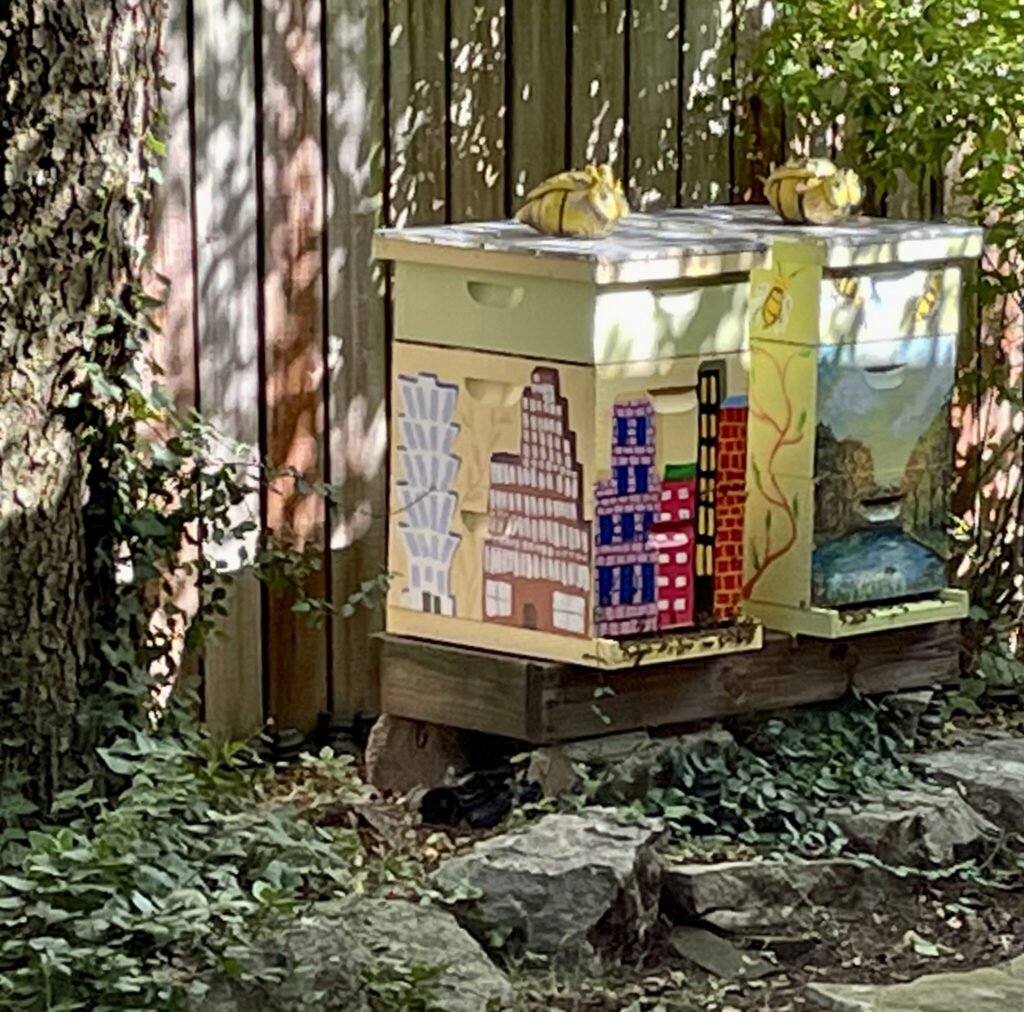
In addition to teaching, Eric has written several textbooks, and it appears he has considerable artistic ability as well. He sculpted the bee figures sitting on top of the hives, above, and painted the hive to the left with local images of the One Hundred and The Residences at The Chase Park Plaza, both of which are visible from the backyard. The image on the other hive, depicting a watery scene in Venice, was painted by the Hahns’ daughter Sara, whose baby son is their first grandchild.
Eric estimates that each hive has a population of 20,000 to 40,000 bees, and that he spends approximately 2 to 3 hours per month maintaining the hives. He doesn’t plant anything special in the yard—other than a little bee balm—as bees can travel up to 3 miles and there is an abundance of flora in the neighborhood (and Forest Park) for them to pollinate.
There are other beekeepers in the Central West End. I know of someone on Maryland Avenue, and chefs at the Royal Sonesta Hotel at The Chase have a beehive on the roof. (Here is a 2018 KSDK news story about that hive.) “It’s entirely possible that bees are intermingling around the same nectar and pollen sources. Bees are one of two animals that have built-in GPS,” Eric explained, “the other is the homing or carrier pigeon.”
In the photo you can see bees at the entrance to the hives (at the bottom). Some of those could be guard bees, who protect the hives from invaders. There is always the possibility that a hive can be raided by a neighboring hive, if the invading hive doesn’t have enough honey, or if a hive is weak and not able to protect itself. A fascinating article on bee invaders can be found on the Bee Informed site.
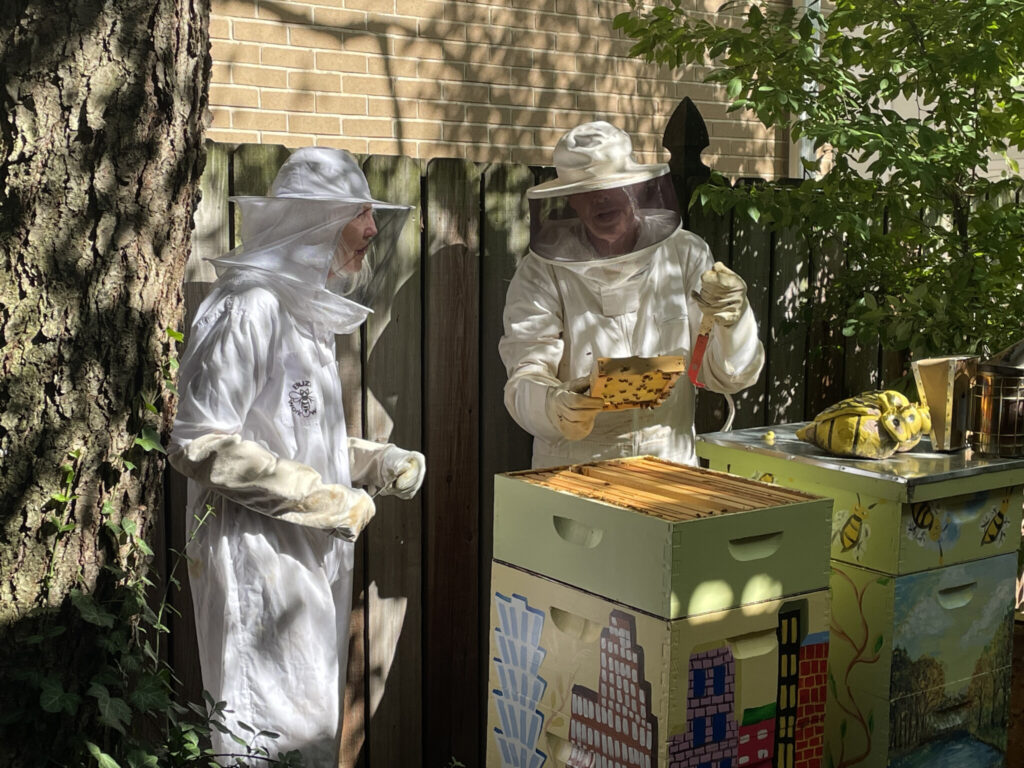
There were many parts of this interview that I loved, but suiting up in beekeeping gear and getting a closer look at the hives was the highlight. Bees are not agressive, I learned, but if you go near them they will become defensive, which is why Eric used a smoker to calm the bees down as we approached. I have to admit I was rather casual about being in the middle of it all, while Eric is understandably super vigilant. He keeps an Epi pen handy, just in case.
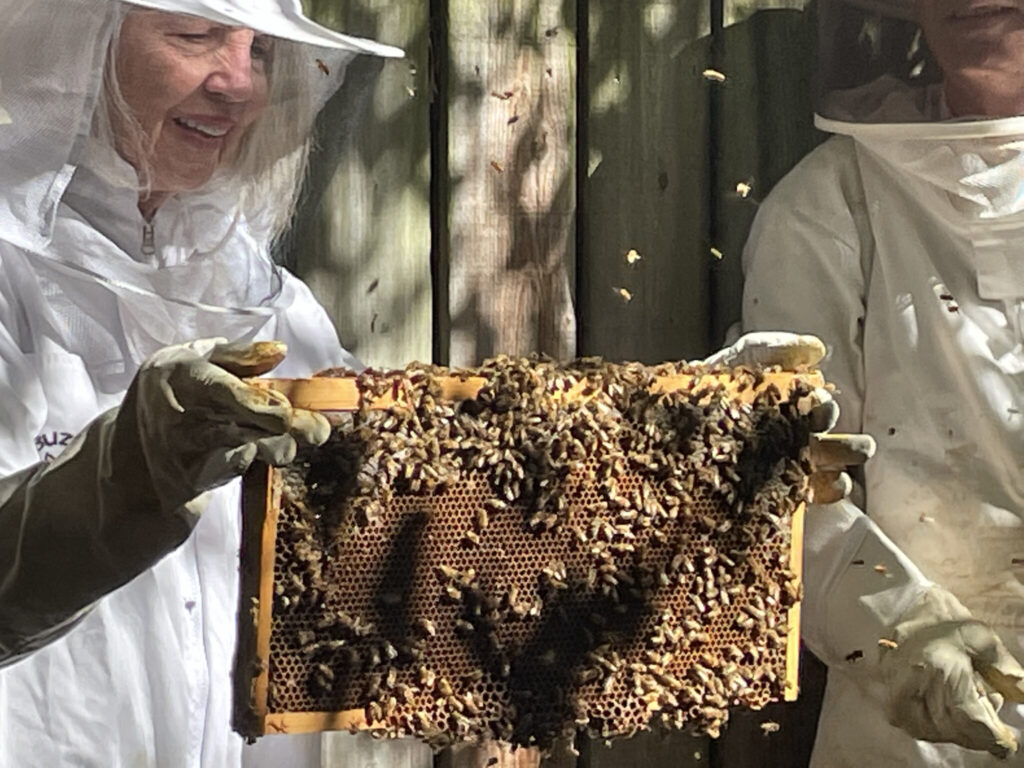
I had just missed the yearly honey-collection time. This year’s yield was 140 pounds, which was less than normal. Eric leaves 100 pounds behind for the bees to live on during the winter. He described the honey cleaning and bottling process of “Hahny Honey, Made by Bees in the CWE” as being his least favorite task.
The current crop of bees will die off by Thanksgiving and then the winter bees, which live for 3 to 4 months, will emerge. In the cold weather, winter bees form a sphere around the queen and flap their wings to generate friction and heat.
The winter is also the time that Eric fumigates the hives for the Varroa mite, which originated in Southeast Asia and is devastating hives around the country. 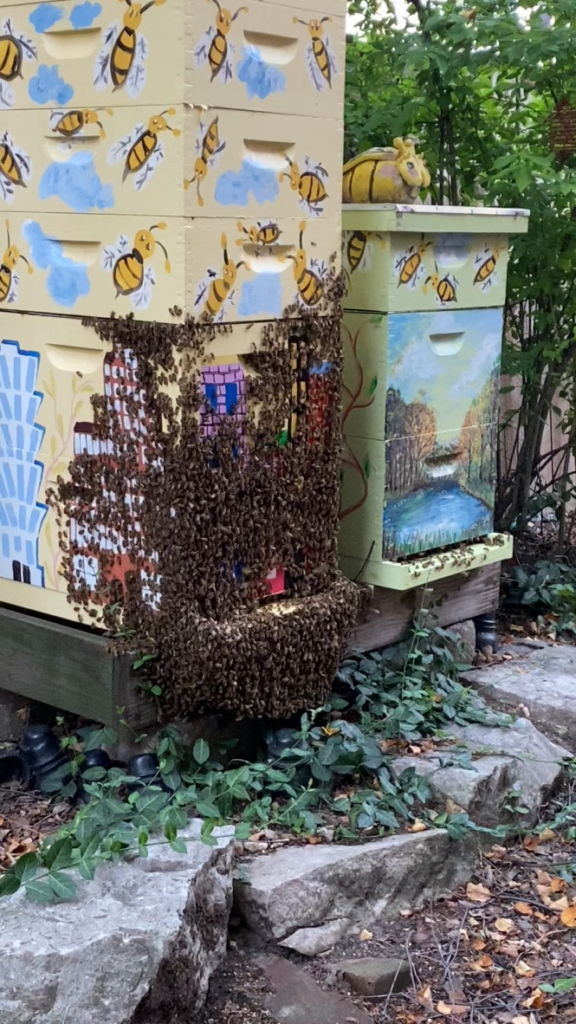
photo courtesy of Eric Hahn
There is so much more to learn about bees. In a study, biologists at St. Louis University led by Assistant Professor Gerardo Camilo found that St. Louis has the most diverse collection of pollinators in North America. Most pollinators can be found in cities, and that is true especially in North St. Louis, where there are many vacant lots. Great Rivers Greenway has joined in the research project and produced an informative account which includes a video that can be viewed here.
Finally, for a deep dive on the subject of beekeeping, Eric suggests reading The Beekeepers’ Bible or Beekeeping for Dummies. Another source of knowledge is the Eastern Missouri Beekeeping Association. They are happy to share information, membership is $10. If you should one day find a swarm of bees in your yard, contact the association for help.
The Hahns are just one more example of the many great neighbors who call the Central West End home. Thanks to Eric for sharing his expertise and for giving me the opportunity to get so close to the hives. It was a thrill.
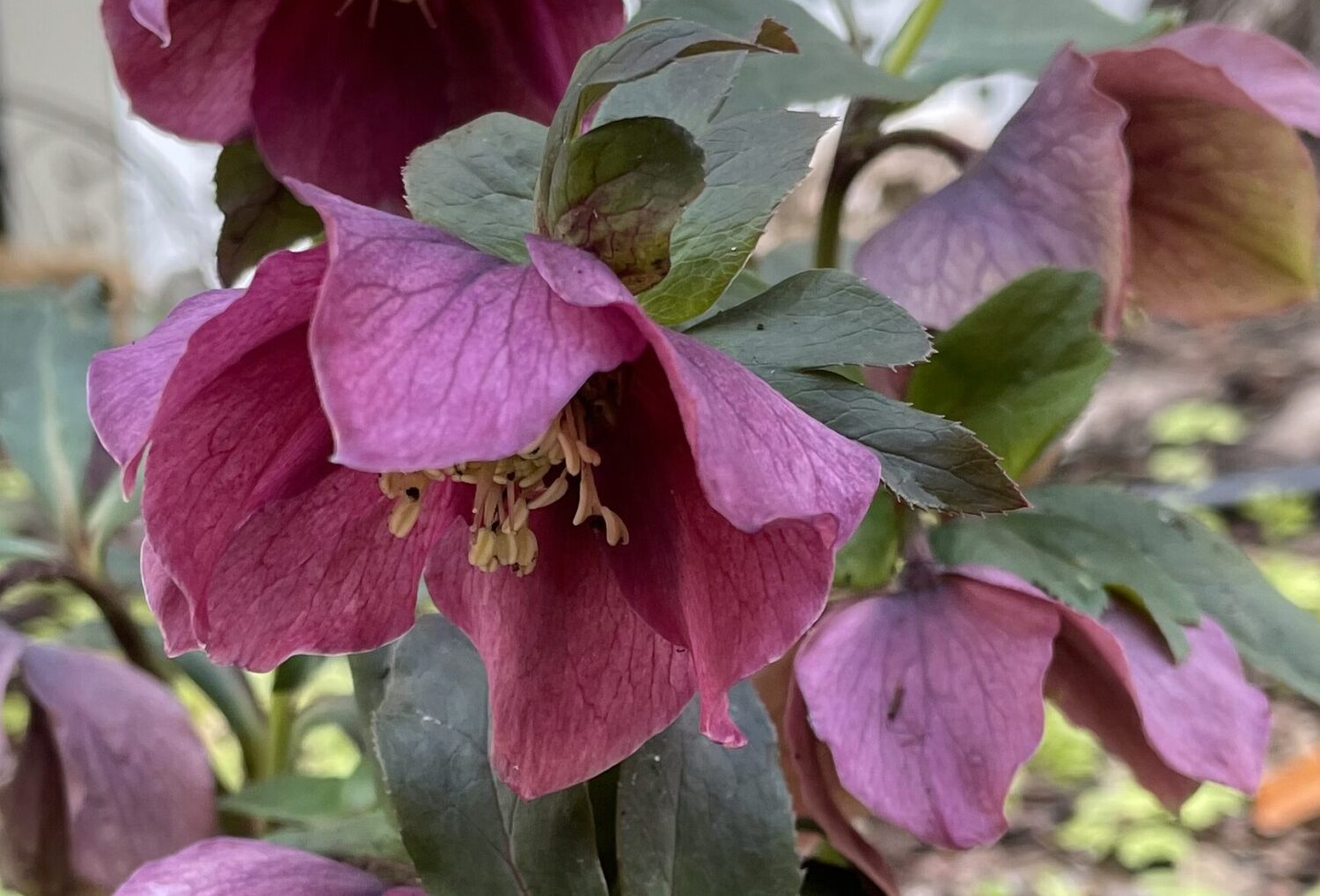
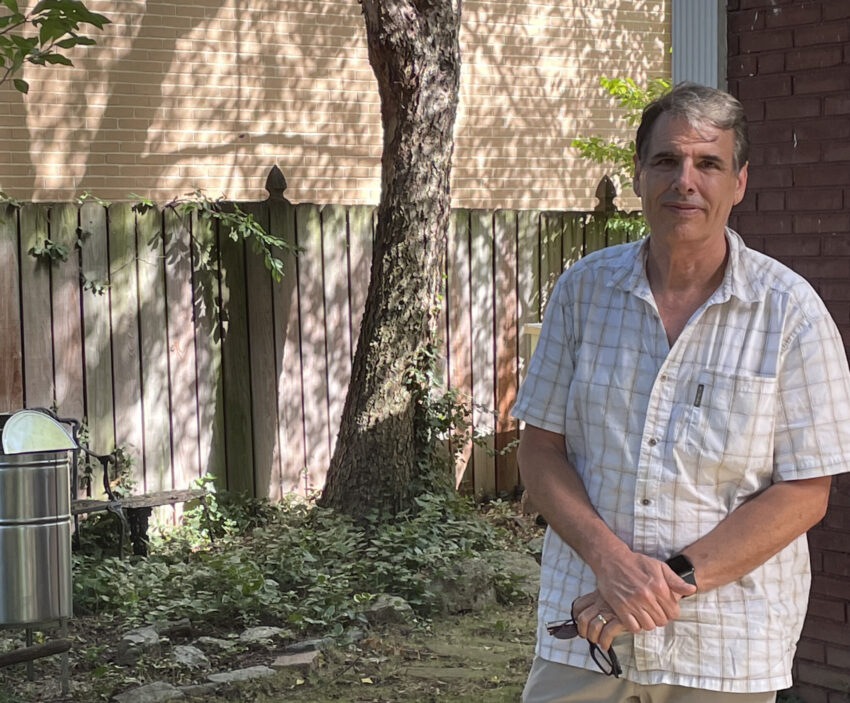
Thank you, Nicki! Loved this.
Really fascinating vignette of life in the CWE – our building has also planted an abundance of bee balm and other attractors in the margins of a parking lot – did not know the Chase Park has a hive; perhaps their bees eat dinner out at our place! Forest Park is now a miracle of thoughtful and beautiful plantings for our buzzy friends, too.
What a great story, Nicki! Loved the picture of you wearing the bee suit. If I remember right, didn’t you have a bee hive in your back yard when we lived in the CWE?
No we did not. So much commotion there all the time, I can see why you thought so.
Loved this story Nicki. Does Eric sell any of his honey harvest?
Hi Mary, et al… Thanks again to Nicki for such a wonderful time we had together. Mary, I really don’t harvest enough to sell much honey- I work with some school groups and they get their tastes… maybe if/when I fully retire I can concentrate on producing enough liquid gold to become commercial.
Nicki awesome story! Hey I like your bee outfit!! We had bees at the Central West End Farm for years. Eric is simply put, helping saving our planet as we know it. Bees are essential and disappearing. Thanks for sharing. Even from afar I love your stories. Arthur
That so fascinating. Very good story, Nicki.